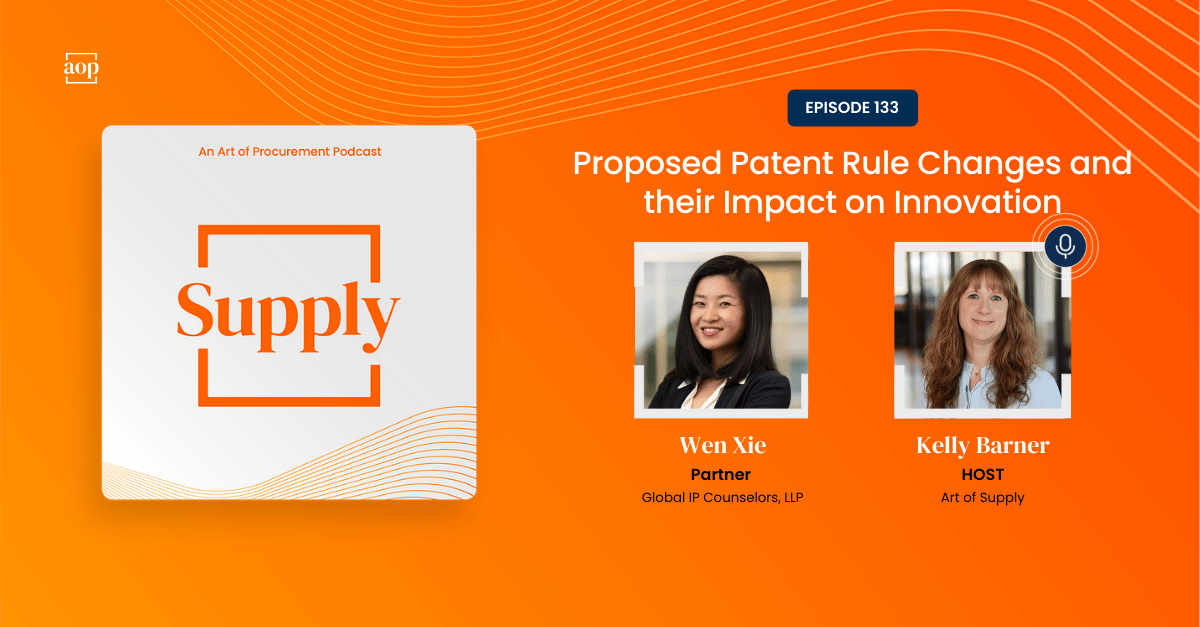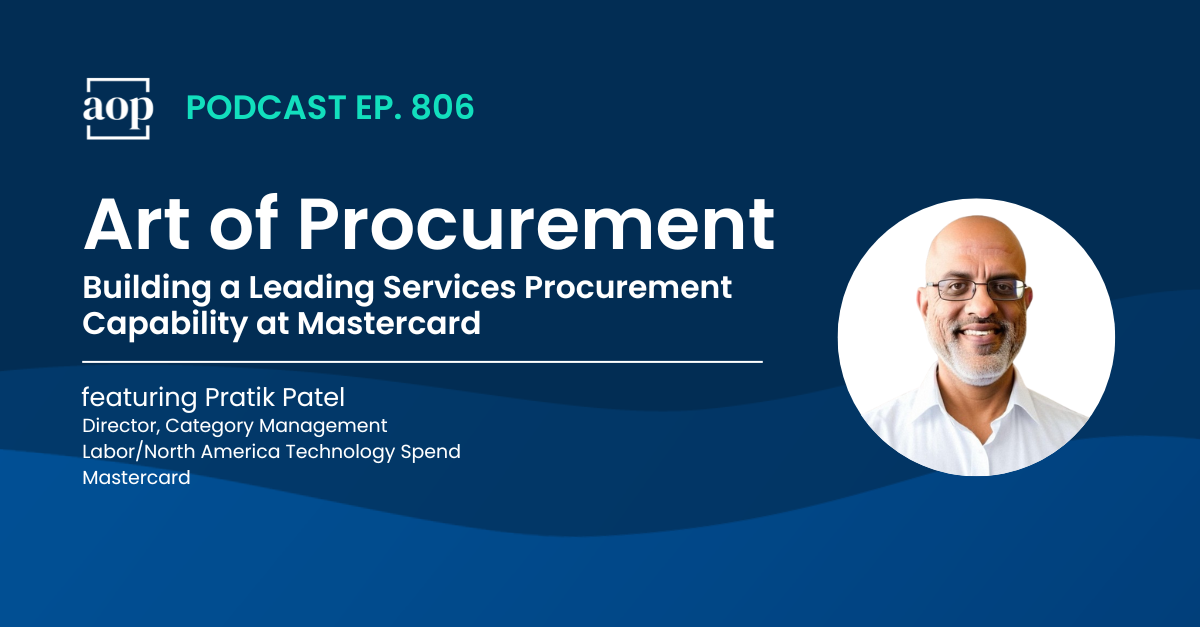5 min read
Proposed Patent Rule Changes and their Impact on Innovation w/ Wen Xie
Kelly Barner : September 5, 2024

As someone who has never specialized in a patent-intensive space, I would have thought that patents were just about a company’s ability to protect their innovations from encroachment or duplication by competitors. While that isn’t wrong, it is only part of the picture.
Patents are an exchange of sorts. The company earning (and paying for) the patent does earn protection for 20 years from the date of filing, but they trade information in the process. In order to earn a patent, an idea has to be novel and non-obvious, but their filing also has to educate others about what they have discovered.
There are benefits on both sides, but it is a delicate balance. Any change to the way the patent system works threatens to alter corporate disclosure, potentially disrupting competition and progress at the same time.
To learn more about some of the most discussed complexities and pending changes to the U.S. patent system, I recently spoke with Wen Xie, a patent attorney and a Partner at Global IP Counselors, LLP.
Patent Basics
Wen and I started our conversation by laying out some basics before digging into a really interesting turn of events set to hit the world of patent protections, and – by extension – nearly every industry.
“In the United States, and this is pretty much harmonized all around the world, the typical bar [for a patent] is novelty, non obviousness,” Wen told me. “What’s also really important is enablement; it has to be a teaching document. It has to teach others how to make and use.”
While the patent protects an invention or innovation for a specific duration, the idea of enablement is that others can build upon and around what they have discovered. In that way, all organizations in a space have the opportunity to continue to develop based on shared understanding.
“The idea is that otherwise people will just keep their inventions to themselves because if they think someone’s going to steal it, they just won’t share it,” she explained.
Duration and Continuation
Since 1995, patents have provided for an exclusivity period of 20 years from the earliest date of filing. That period added three years for the “period of examination,” effectively covering the patent filer for a bit longer to compensate for what can be a lengthy review process with the USPTO.
In addition to that three year extension, filers can be given extensions to address delays – including those due to delays associated with FDA approval for pharmaceutical companies.
From patent duration and extension, the conversation turned to continuation. According to Wen, the continuation practice in patent filing is when “…you take the original application and change the scope of your protection based on the original application.”
The original patent application might be based on protecting one part of the design, and after taking the product to market the company realizes they should also change the scope of the patent to include how the product is made (for instance). “So you rely on the disclosure of your original application to be able to protect, to sort of carve out different protection boundaries for your invention.”
While a continuation filing adds to the protections of the original patent, it does not extend the protection window because it carries the original filing date forward and therefore expires at the same time. According to Wen, some people argue that continuation filings should extend the period of exclusivity, when in fact they have not invented anything new.
Wandering in a Dark (Patented) Forest
The final topic I took the opportunity to ask Wen about is the concept of a ‘patent thicket.’ While not a legally defined term, it is yet another practice within the world of intellectual property that sparks spirited debate.
“Patent thicket is not a technical term. It’s not a legal term; it is a colloquial term that is sparingly used by people who actually really don’t like the idea of patents, she explained.
Even without a background in IP law, I’ll admit that the imagery is crystal clear. No one walking along on a beautiful day comes up against a thicket and says, ‘Hooray! A big dark, dangerous thing blocking my way!’ Wen acknowledged as much, saying, “It’s supposed to denote something dark and sinister. I think when you say thicket, it sounds like a black forest.”
Rather than filing for a continuation on an existing patent, some companies or inventors will try to file additional patents to protect the same area of discovery. The implication of the term is that the additional patents are somehow hidden, and represent a threat to other companies looking to innovate in the same space. In some instances, discussions of patent thickets take place with regard to the continuations filed in the pharmaceutical industry.
I found an example of this argument in a 2022 New York Times article titled “Save America’s Patent System.”
According to that article, 80 percent of the drugs associated with patents awarded between 2005 and 2015 were not new. They characterize the discoveries used to justify additional exclusivity as “uninspiring tweaks” before calling for general USPTO reform.
I asked Wen about this, and she returned to the standards for awarding any patent – continuation or otherwise, “This article they say it’s not new, but how could it be not new with the novelty and obviousness are standards that you have to meet in order to get a patent?”
“If you add new matter, you don’t get your original filing date. You’re relying on your original disclosure. Usually what happens is if it’s around the same drug, you are getting patents on that compound, method of isolation, method of testing, method of dosage, method of administration,” she added. “The inventive step for a chemical compound to get a life science patent is actually the highest of all the arts. Biological arts are so unpredictable and difficult to manipulate, and it takes so many years to get something new. When you compare that to software, or mechanical, you could change the parts around, you could make something out of metal instead of plastic.”
While the pharmaceutical industry receives substantial press for tier patent filings, they are not the most prolific filers by far. With labels like “patent thickets” being applied to their filing practices, clearly they are being cast as ‘bad guys,’ with calls for reform sometimes reflecting varying opinions about the patent system as a whole.
Proposed Rule Change: Terminal Disclaimers
Building on our conversation about patent basics and continuation filings, Wen then brought up a proposed rule change that would affect terminal disclaimers.
According to the USPTO, a terminal disclaimer is “a statement in which a patentee or applicant disclaims or dedicates to the public the entire term or any terminal part of the term of a patent or patent to be granted (filed in an application).
The rules change would tie together the parent patent application as well as all associated or downstream applications. “If any one of them gets invalidated at some point during their life, the whole thing falls. Everything dies,” Wen explained.
And knowing most of my audience – which definitely includes me! – is new to all of this, she offered a really helpful explanation:
Say you have a property. A portion of your property line is defined by fences. And a portion is defined by a grove of trees and a portion defined by a lake. These are different ways of defining your property lines (or scopes of patent claims).
If someone says, your fencing is mismarked, it actually shouldn’t be this far out. Let’s wipe out the grove of trees, wipe out the lakes, wipe out everything. That’s what they want to do.
As always with a change this impactful, the question has to be ‘Why?’ And in this case, Wen doesn’t see an obvious answer.
“Why are we adding an extra step in terms of invalidating everything? Terminal disclaimers were just about disclaiming term, but this would also disclaim subject matter on a broad scale across any claims tied by terminal disclaimer.”
The proposed change seems harsh, a very severe response to something that could be handled in a more targeted way. And of course, companies will need to decide how to respond.
Wen’s guess is that it will change the decision to disclose innovations, even in exchange for protections. “Well, it’s very simple,” she said. “They just won’t disclose. They won’t file a patent. They may stop making it entirely, which is bad too.” And because patents are awarded and enforced one country at a time, such a change could draw investment and innovation abroad, especially if another country seizes the opportunity and offers better terms to move offshore and earns their patents elsewhere.
Right now, this proposed rule is just that, proposed. There is a notice and comment window set aside. But if Congress doesn’t review it, the changes may be automatically implemented – and then we’ll all have to be on the lookout for the impact. The best option today is hoping it doesn’t happen, never the strongest strategy.




